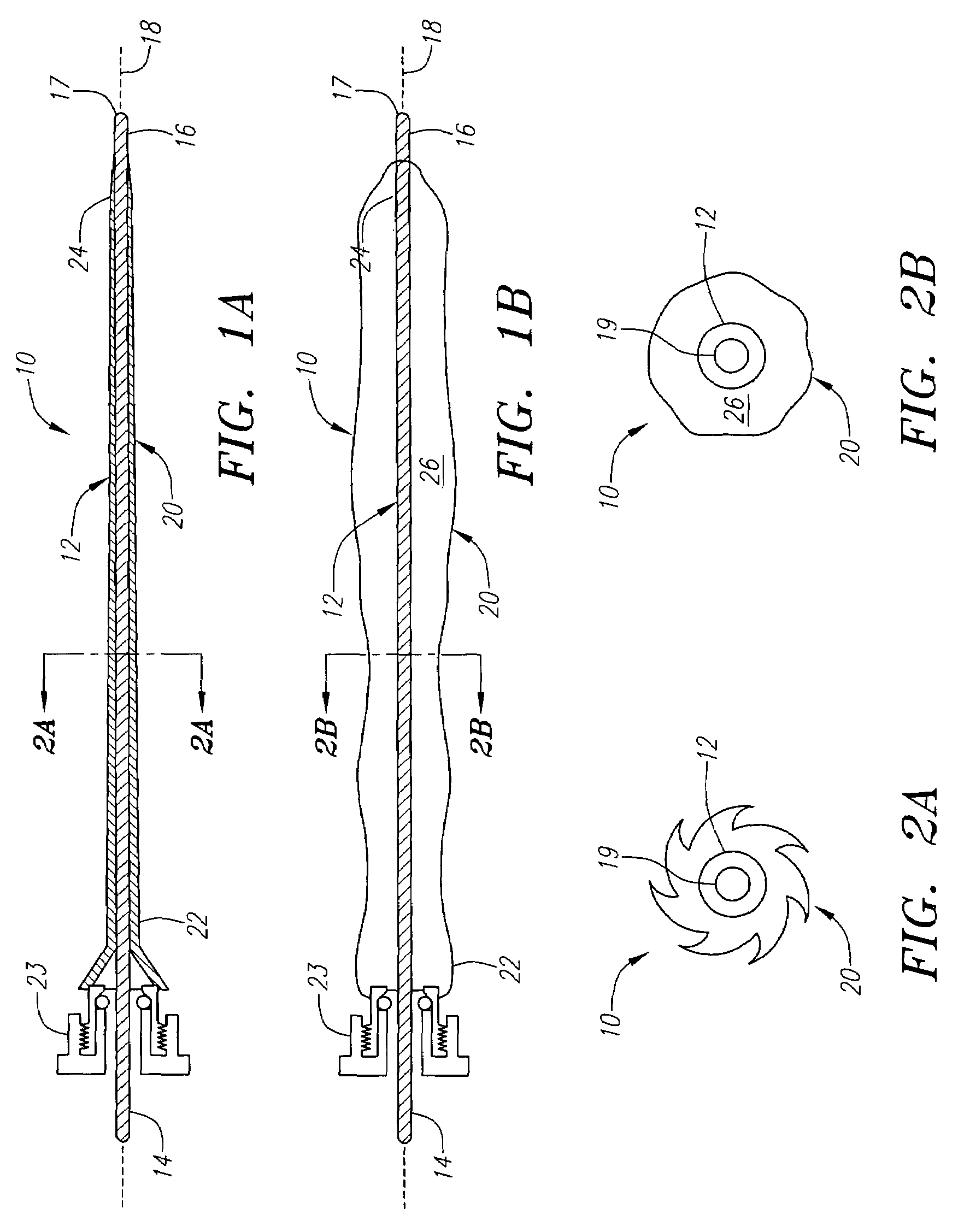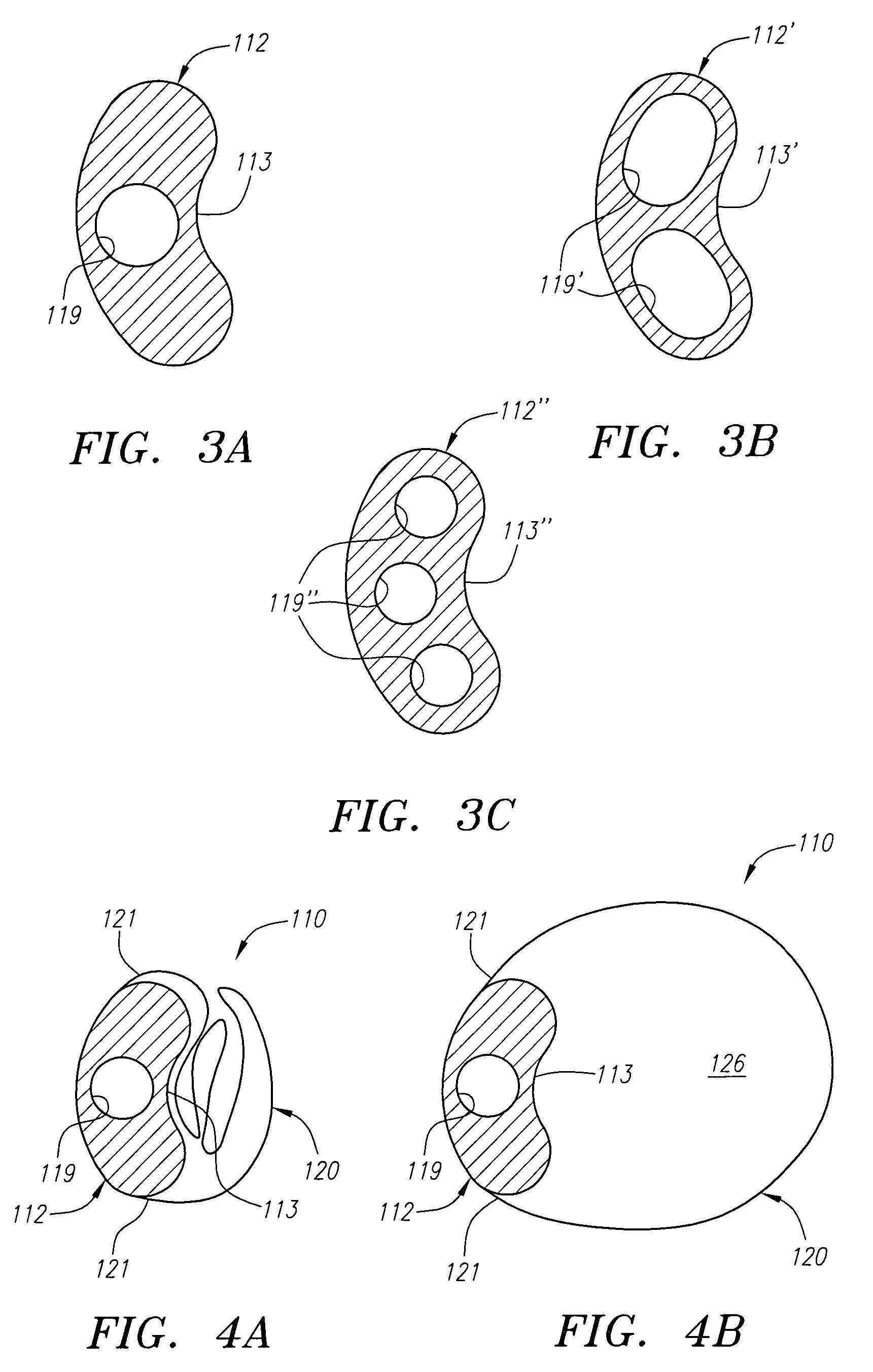Expandable guide sheath and apparatus with distal protection and methods for use
a guide wire and distal protection technology, applied in the field of guide wires, can solve the problems of advancing instruments over a guide wire, catheters or other instruments may skive or otherwise damage the wall of a vessel, and instruments may even perforate the vessel wall, so as to facilitate the removal of the body lumen, facilitate the advancement, and reduce the risk of embolic material
- Summary
- Abstract
- Description
- Claims
- Application Information
AI Technical Summary
Benefits of technology
Problems solved by technology
Method used
Image
Examples
Embodiment Construction
[0050]Turning to the drawings, FIGS. 1A-2B show a first preferred embodiment of an apparatus 10 for providing access within a body lumen (not shown) and / or for delivering one or more instruments (also not shown) within a body lumen, such as a vessel within a patient's vasculature, a passage within a patient's gastrointestinal tract, urogenital tract, respiratory tract, lymphatic system, and the like.
[0051]Generally, the apparatus 10 includes a flexible elongate stiffening member 12 providing a “backbone” for the apparatus 10, and an expandable membrane or sheath 20. The stiffening member 12 includes a proximal end 14 and a distal end 16 defining a longitudinal axis 18 therebetween. In addition, the stiffening member 12 may have sufficient length to be advanced from a location outside a patient's body (not shown) through any intervening body passages into a site to be accessed and / or treated. The distal end 16 may have a size and / or shape for insertion into a body lumen, e.g., includ...
PUM
 Login to View More
Login to View More Abstract
Description
Claims
Application Information
 Login to View More
Login to View More - R&D
- Intellectual Property
- Life Sciences
- Materials
- Tech Scout
- Unparalleled Data Quality
- Higher Quality Content
- 60% Fewer Hallucinations
Browse by: Latest US Patents, China's latest patents, Technical Efficacy Thesaurus, Application Domain, Technology Topic, Popular Technical Reports.
© 2025 PatSnap. All rights reserved.Legal|Privacy policy|Modern Slavery Act Transparency Statement|Sitemap|About US| Contact US: help@patsnap.com



